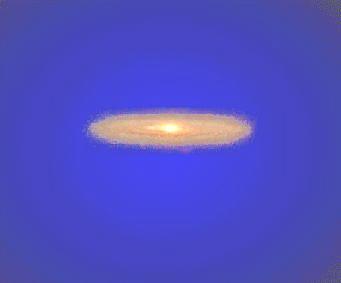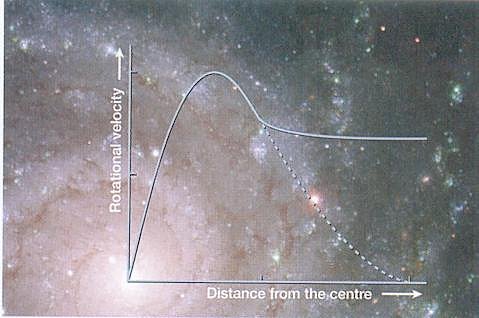 |
The halo is a spherical cloud of thinly scattered stars and globular clusters. It is the largest component of the Milky Way, extending to radius of about 100 kpc. It contains very little dust or gas. No star formation currently takes place there. This means that the halo contains very few young stars. Most of the halo stars are, in fact, 10 - 14 billion years, which is very close to the age of the galaxy itself. Halo stars are extreme Population II stars. They are very old, have very low metal content, and move in randomly tipped, elliptical orbits.
The motion of objects in the Milky Way is not consistent with the amount of luminous matter, which is not enough to confine these objects inside the Milky Way boundary. The problem can be reconciled if a lot of dark matter still remains in the halo - the original clump of mass - while the cooling of the hydrogen allows ordinary matter to contract, and settled into the disk.
|


